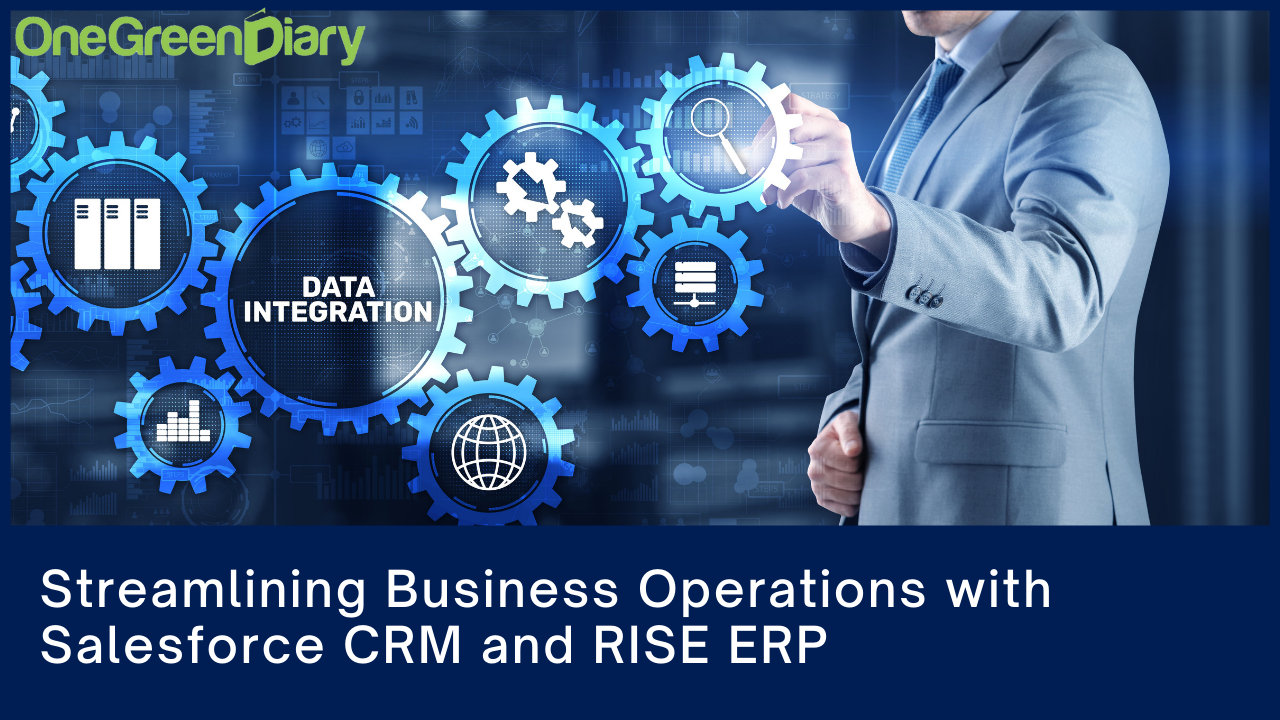In today’s dynamic business landscape, seamless integration between customer relationship management (CRM) systems and enterprise resource planning (ERP) solutions is no longer a luxury but a necessity. Salesforce CRM stands out as a powerhouse in managing customer interactions and sales processes, while Rise ERP offers robust functionalities for inventory management, production control, financial oversight, and supply chain optimization. Combining the strengths of these two platforms through integration opens up a world of opportunities for businesses to streamline operations, enhance productivity, and drive growth.
The Power of Salesforce CRM
Salesforce CRM has earned its reputation as the leading CRM platform globally for several reasons:
1) 360-Degree Customer View:
Salesforce provides a comprehensive view of customer interactions, preferences, and historical data, empowering sales teams to engage effectively and nurture relationships.
2) Sales Process Automation:
Automation features in Salesforce streamline sales processes, from lead generation and opportunity management to quote generation and order fulfillment, driving efficiency and reducing manual tasks.
3) Insightful Analytics:
Advanced analytics tools in Salesforce enable data-driven decision-making, allowing businesses to gain actionable insights into sales performance, customer behavior, and market trends.
4) Scalability and Customization:
Salesforce’s scalability and customization capabilities cater to businesses of all sizes and industries, offering tailored solutions to meet unique business needs and adapt to evolving requirements.
The Strengths of Rise ERP
On the other hand, Rise ERP brings a wealth of functionalities to the table that are vital for efficient operations and strategic decision-making:
1) Inventory Management:
Rise ERP offers robust inventory management features, including real-time tracking, inventory optimization, demand forecasting, and warehouse management, ensuring optimal stock levels and efficient logistics.
2) Production Control:
With Rise ERP, businesses can streamline production processes, manage resources effectively, track work orders, monitor production costs, and ensure timely delivery of goods to customers.
3) Financial Management:
Rise ERP provides comprehensive financial management tools, including accounting, budgeting, invoicing, financial reporting, and compliance management, enabling businesses to maintain financial health and regulatory compliance.
4) Supply Chain Optimization:
Rise ERP optimizes supply chain processes by facilitating seamless collaboration with suppliers, optimizing procurement processes, managing vendor relationships, and enhancing supply chain visibility and transparency.
The Benefits of Integration
Integrating Salesforce CRM and Rise ERP offers a plethora of benefits that drive operational efficiency, improve decision-making, and enhance customer satisfaction:
1) Streamlined Data Flow:
Integration ensures seamless data flow between Salesforce CRM and Rise ERP, eliminating data silos, reducing manual data entry errors, and providing a unified view of customer and operational data.
2) Improved Sales and Operations Alignment:
Integration enables better alignment between sales and operations teams by synchronizing sales data, order information, inventory levels, and production schedules, leading to improved forecasting accuracy and inventory management.
3) Enhanced Customer Experience:
Integration allows businesses to deliver a superior customer experience by providing sales teams with real-time access to customer data, order status, and delivery information, enabling personalized interactions and timely responses to customer inquiries.
4) Efficient Order Fulfillment:
Integrated systems streamline order processing, from lead conversion to order fulfillment, by automating workflows, generating accurate quotes and invoices, tracking order status, and coordinating with production and logistics teams for timely delivery.
5) Data-Driven Insights:
Integration enables businesses to leverage advanced analytics and reporting capabilities, combining sales data from Salesforce CRM with operational data from Rise ERP to gain actionable insights into sales performance, customer behavior, inventory trends, production efficiency, and financial metrics.
The Path to Successful Integration
Successful integration of Salesforce CRM and Rise ERP requires careful planning, collaboration between IT teams and business stakeholders, and adherence to best practices:
1) Define Integration Objectives:
Clearly define integration objectives, such as improving data accuracy, enhancing process efficiency, enabling real-time reporting, and driving sales and operational alignment.
2) Select Integration Tools:
Choose integration tools and platforms that support seamless data synchronization, API connectivity, data mapping, transformation, and error handling, ensuring smooth integration between Salesforce CRM and Rise ERP.
3) Map Data Flows:
Map data flows between Salesforce CRM and Rise ERP, identifying data entities, fields, relationships, and synchronization rules to ensure accurate and consistent data transfer.
4) Implement Integration:
Implement integration workflows, configure data mappings, set up data synchronization schedules, and perform integration testing to validate data accuracy, system performance, and end-to-end process flows.
5) Monitor and Optimize:
Monitor integration performance, data integrity, and system interactions post-implementation, conduct regular audits, address any issues or discrepancies, and optimize integration workflows to ensure ongoing reliability and scalability.
Conclusion
Integrating Salesforce CRM and Rise ERP unlocks synergies that drive operational excellence, empower decision-makers with actionable insights, and elevate the overall customer experience. By harnessing the strengths of both platforms and fostering seamless collaboration between sales, operations, and finance teams, businesses can achieve greater efficiency, agility, and competitiveness in today’s dynamic marketplace.

